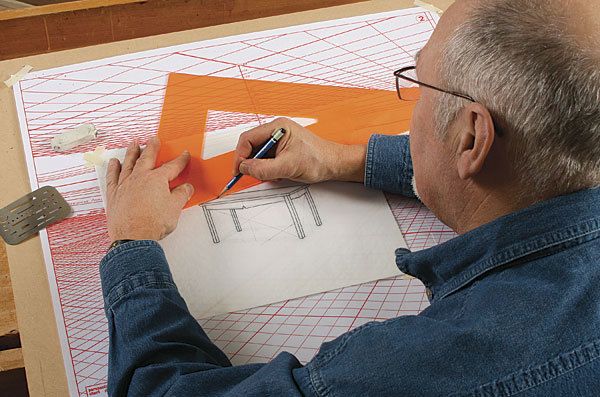Put Your Designs in Perspective
Why pencil and paper still beat the computer
Synopsis: Perspective charts are not expensive but they will change your lifeÑat least they will if you are in the habit of drawing furniture designs to visualize how a completed piece will look or to show to prospective clients. Perspective drawing can be tricky, and these charts take all the guesswork out of it. With just a few tips from Michael Fortune and a set of $38 charts, you’ll soon be drawing pictures of your furniture ideas that actually look like what you have in mind. All the parts will be to the same scale, and you’ll be able to try out different details to see how they will look.
From Fine Woodworking #220
Elevation drawings—where the top, side, and front of a piece of furniture are shown separately—are a common design tool, but they have two serious flaws: They isolate the three views from one another, and they don’t show perspective. That makes it difficult to visualize what the completed piece will look like. A perspective drawing of the same piece shows exactly how it will look, allowing you to catch design problems before you begin to make it.
Perspective drawings are also a great tool when you’re building for someone else. A client, spouse, or friend is more likely to understand a perspective drawing than a set of elevations, and won’t be surprised when the piece is delivered. I’ve also found that my perspective drawings have become a great “inspiration bank” when I’m casting about for something to make.
Ordinarily, learning to draw in perspective can take a long time. I spent four years in art school drawing still-lifes and naked people, and converting those skills to furniture drawings proved difficult until I happened across a set of Lawson perspective charts. It was a real “eureka” moment for me: After using the charts for just a short time, I was drawing pictures of my furniture ideas that really looked like what I had in mind. All the parts were to the same scale and even my table legs all appeared to rest on the floor, a detail that had previously escaped me.
A bit more practice allowed me to leave the charts behind, because I’d developed a sense of what perspective drawings should look like and how they’re made. After I show you what I’ve learned,
you, too, will be on the path to beautiful and useful drawings.
For the full article, download the PDF below:
Fine Woodworking Recommended Products

Circle Guide

Drafting Tools

Blackwing Pencils























Log in or create an account to post a comment.
Sign up Log in